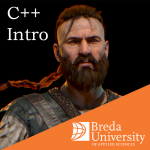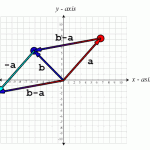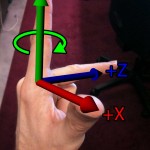This episode covers debugging. We will see how an application can be halted at any time or at a specific line and how we can inspect variables to verify that everything works as intended. Debugging can be a complex process but we’ll limit ourselves to the basics of breakpoints and following program flow, while keeping an eye on variables.
Tag Archives: math
C++ Fast Track for Games Programming Part 6: Floats
In this tutorial, we’re going to look at how you can get the computer to calculate with decimal values (numbers like 3.14, called floats), instead of only integral values (numbers like 3, called integers).
C++ Fast Track for Games Programming Part 5: Conditions
This tutorial is about the condition commands C/C++ has which allow you to make automated decisions in your program. You already used conditions when you did loops (perhaps without realising it), but in this episode we will look at more explicit conditions.
C++ Fast Track for Games Programming Part 4: Sprites and Loops
This tutorial is about two things: sprites and loops. Sprites will get you on your way to making interesting stuff move on the screen, whereas loops will help you write less code to do more. On with the show!
C++ Fast Track for Games Programming Part 3: Variables and Functions
The previous tutorial introduced you to the template. You can now draw some lines and print some text in all kinds of colours, but that’s clearly far from the goal of making actual games, where bullets wizz past in glorious 3D and enemies flank you in the smartest ways. To get a bit closer to that, we’ll take the static coordinates from last time and make them a bit more flexible by using C++ variables and functions. We’ll need that for the next part, which is all about loops, sprites and other bouncy things.
C++ Fast Track for Games Programming Part 1: Getting Started
Welcome to the first article in the Programming C++ Fast Track tutorial series! These tutorials are designed to take you from zero to a decent entry level in a somewhat smooth fashion. We start at the absolute basics: all that you need to get started is a laptop or PC, a fair bit of time, and quite a bit of dedication.
Volume Tiled Forward Shading
In this post, Volume Tiled Forward Shading rendering is described. Volume Tiled Forward Shading is based on Tiled and Clustered Forward Shading described by Ola Olsson et. al. [13][20]. Similar to Clustered Shading, Volume Tiled Forward Shading builds a 3D grid of volume tiles (clusters) and assigns the lights in the scene to the volumes tiles. Only the lights that are intersecting with the volume tile for the current pixel need to be considered during shading. By sorting the lights into volume tiles, the performance of the shading stage can be greatly improved. By building a Bounding Volume Hierarchy (BVH) over the lights in the scene, the performance of the light assignment to tiles phase can also be improved. The Volume Tiled Forward Shading technique combined with the BVH optimization allows for millions of light sources to be active in the scene.
3D Math Primer for Game Programmers (Vector Operations)
In this article I would like to discuss operations on vectors. This article assumes the reader has a basic knowledge of what vectors are and how they are represented. My goal here is simply to refresh your memory about what kind of operations can be performed on vectors specifically operations that are important if you are trying to create a 3D game engine.
Continue reading
3D Math Primer for Game Programmers (Matrices)
In this article, I will discuss matrices and operations on matrices. It is assumed that the reader has some experience with Linear Algebra, vectors, operations on vectors, and a basic understanding of matrices.
3D Math Primer for Game Programmers (Coordinate Systems)
In this article, I would like to provide a brief math primer for people who would like to get involved in game programming. This is not an exhaustive explanation of all the math theory that one will have to know in order to be a successful game programmer, but it’s the very minimum amount of information that is necessary to know before you can begin as a game programmer.
This article assumes you have a minimum understanding vectors, and matrices. I will simply show applications of vectors and matrices and how they apply to game programming.





